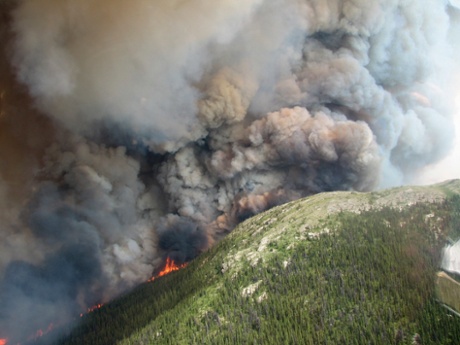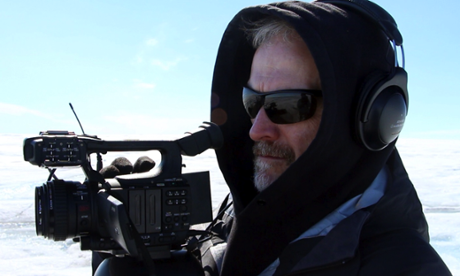by John Abraham, "Climate Consensus - The 97%," The Guardian, July 24, 2014

Around the planet, wildfires are becoming larger and more destructive. This summer, a series of wildfires enveloped large areas of Canada’s Boreal forest, blanketing western North America with smoke. One key question is, do these fires have an effect on climate by darkening Arctic ice with layers of soot, causing more sunlight to be absorbed by the ice?
For the second year, the Dark Snow Project science team has taken to the ice on Greenland to investigate the forces driving Greenland's ice loss. They are looking at the causes of surface darkening on the ice sheet that's been observed over the last decade.
The Dark Snow Project is a collaborative effort between a multidisciplinary, international group of experts. The driving questions are, what's causing the steady darkening of the Greenland Ice Sheet that has been observed in the past decade? Is it an important cause of ice melt? Does it represent yet another climate "feedback" which is accelerating global change?

A number of natural processes cause ice to darken. The simple process of melting causes ice crystals to deform and reflect less light. In addition, pollen, sea spray, desert dust, pollution from industry and shipping cause darkening. However, there are also other causes.
Recently, newly published research strengthens the idea that wildfire soot has driven extensive melt over the ice sheet, and in addition, that layers of refrozen water are themselves darkening factors that drive further melt.
In addition to increased wildfires, the Dark Snow Team will be investigating the impact of algae and microbes, which, increasingly favored by warming temperatures, are gaining a larger foothold on the ice.
Dark Snow biologist Dr. Marek Stibal has found that a species of algae living on the ice produces a very special pigment that acts as a sunscreen, protecting it against the intense summer glare. The pigment is the very same molecule that gives black tea its color. The dark pigment, visible in many photos of ice during melt season, is an important, but not well understood, part of the darkening process.
As warmer temperatures spread over larger areas of the ice, more liquid water is made available - a vital factor for algae growth. In addition, scientists wonder whether industrial pollution may be delivering key nutrients like nitrogen and phosphorus to the ice, further driving algae growth.
Data is gathered through use of small aerial drones that hover over the ice and gather photographic evidence of changes in whiteness. The team has modified several small drones for their science purposes this year, and they are gathering exciting data under challenging conditions. By combining observations and sampling at the surface, with low-altitude drone observation, and ice-sheet-scale imagery from satellites, the team hopes to have a complete micro-to-macro view of the ice darkening processes.
The original mission of Dark Snow was not just to do science, but also to bridge the communication gap with a wider public, to better inform a global audience on the key findings that fill in the climate change story.
With a feature story in Rolling Stone magazine, and high-profile interviews with Dark Snow scientist Jason Box on NBC, Vice News, and recently, the "Real Time with Bill Maher," that communication part of the mission is also being realized.
The Dark Snow Project is a citizen scientist collaboration, funded by a continuing crowd-source effort online. That effort is still ongoing at this time. One project the team still hopes to fund for August is a satellite hookup for internet connectivity, so as to be able to communicate day-to-day, and moment-to-moment, with journalists and citizens around the globe.
I am anxious to see how this combined funding and media strategy works. While my own climate research is completely unfunded (yes, you read that right), my activities in the thermal sciences has a much more traditional source of resources. Will the Dark Snow project show that alternatives to the traditional research grants are viable? We will see.







No comments:
Post a Comment